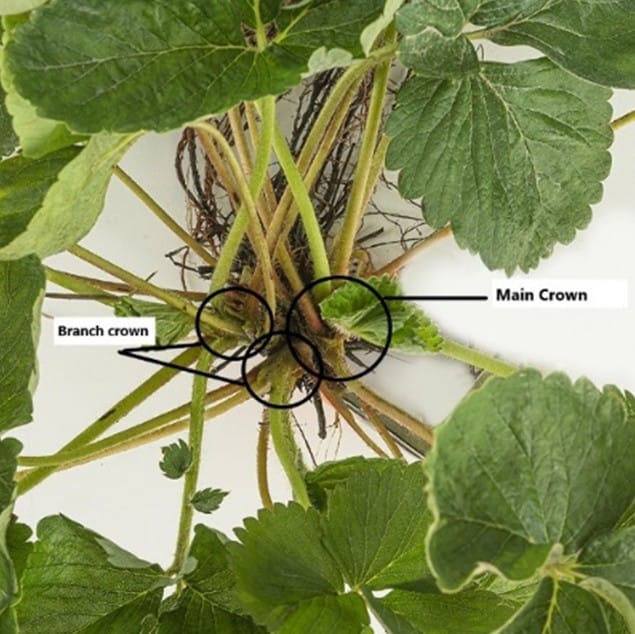Strawberry Plug Culture Basics
Bed Preparation and Planting
Strawberry plug production begins with raised beds arranged in double rows and irrigated with either drip or overhead systems. While plastic mulch is a common option, alternatives like landscape fabric or even bare soil can be used if weed control is not a top priority.
We recommend a minimum raised bed height of 4 inches, with 8 inches being ideal. Lay plastic and drip lines 30 days before planting to get solarization of the beds reducing weed pressure.
Form beds when the soil is moist—creating them in dry conditions can lead to poor moisture levels that are difficult to correct. Water beds thoroughly before planting to ensure a good environment for establishing roots.
Strawberries require high fertility for optimal growth. Incorporate a well-balanced fertilizer—such as Soil Balance or HyR Brix Fruit and Berry—at a rate of up to 3 pounds per 15 feet of bed.
Handling and Planting Plugs
Inspect plants immediately upon arrival. Remove all packaging to allow excess heat to escape and ensure the plants remain cool. Aim to plant plugs the same day or the following day after delivery.
Set plugs in double rows spaced 12 inches apart, with 10–14 inches between plants. Late August is the ideal planting time. Use overhead irrigation right after planting and throughout the first week to establish strong root-to-soil contact. After establishment, switch to drip or hand irrigation to maintain consistent moisture and nutrient levels.
Runner Removal and Branch Crown Development
Removing runners is critical for maximizing fruit production. Runners divert energy away from fruit development, reducing both berry size and yield. Regular runner removal—ideally weekly—can significantly boost yields. Even removing runners just three times during the growing season outperforms a single removal or none at all.
During the growing season, the main crown produces side shoots called branch crowns. For best yields in the first fruiting year, aim for 2–3 branch crowns per plant by late October. Timely planting is essential to reach this target.

Fertility and Feeding
In plug systems, the goal is rapid development of a large, healthy mother crown and 2–3 branch crowns. In addition to your initial fertilizer, apply a balanced liquid fertilizer weekly, ideally one that includes micronutrients (such as HyR Brix Liquid). Supplement every third feeding with liquid calcium nitrate to support growth. When a strong fertility program is used the previous season, minimal fertilizer will be needed in the spring.
Mulching and Winter Protection
For overwintering, straw mulch offers the best protection by maintaining consistent crown temperatures and reducing premature spring growth during warm spells. This helps prevent frost damage to early flower buds by delaying development until true spring arrives.
Row covers are a viable alternative in areas with reliable snow cover or milder winters. However, they require careful management. If snow is minimal or temperatures rise unexpectedly, floating row covers can actually encourage early growth, increasing the risk of frost damage. In these cases, covers should be removed during warm spells and reapplied when freezing temperatures return. Be sure they are properly anchored—if they blow off, plants can be exposed to lethal cold.
We do not recommend skipping mulch entirely unless you’re in a region with consistently mild winters or reliable snow cover.
Renovation After Harvest
Beds should be renovated promptly after harvest. For plasticulture systems, follow these steps:
- If the planting is relatively disease-free, mow tops with a rotary mower (or hand tools for smaller areas), being careful not to damage the crown.
- Remove any remaining runners manually.
- Inspect and repair plastic mulch and drip lines, and flush irrigation systems as needed.
- Clear away all dead foliage and plant debris around the crown, using a leaf blower or by hand.
- Assess crown density. If more than five branch crowns are present, thin the crown manually or with an asparagus knife, leaving at least three per plant.
- Throughout summer, maintain plant health with regular irrigation and appropriate control of pests and diseases.
